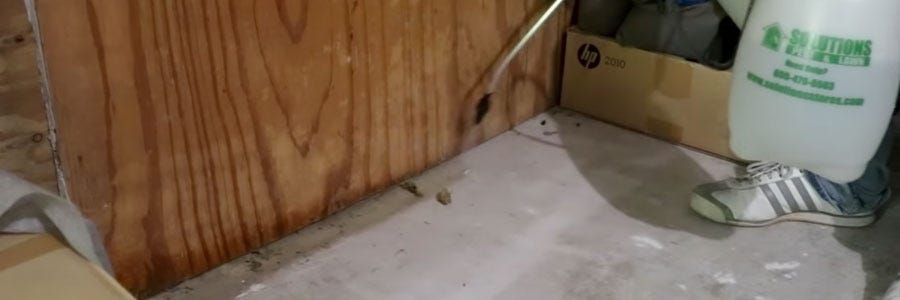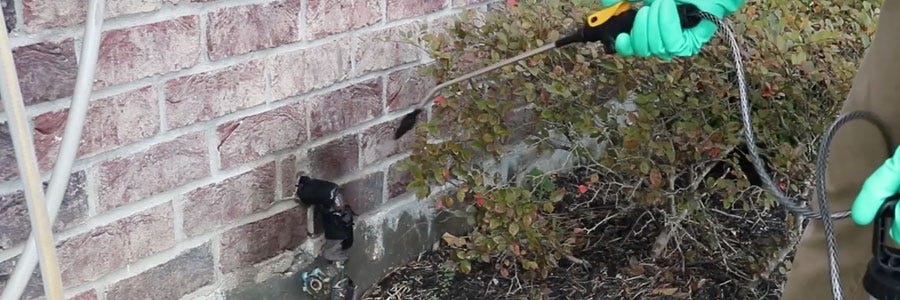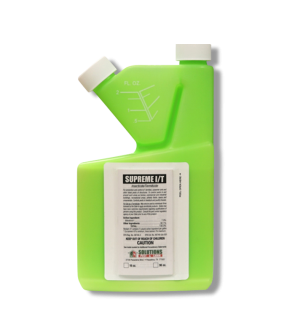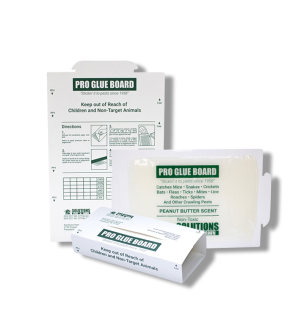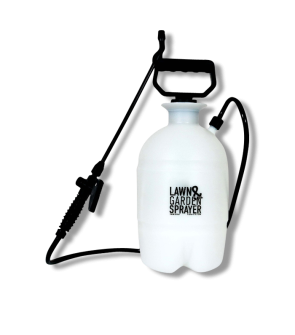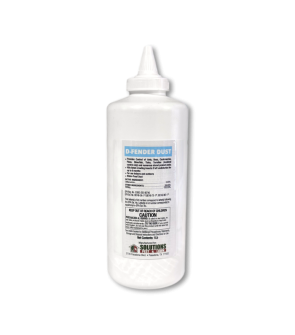Gain access to personalized product screening, the best pricing, rewards, and more!
Most Effective Products
Hobo Spider Control: How To Get Rid of Hobo Spiders
This page is a general DIY article on eliminating hobo spiders from your property using the products and methods suggested throughout this guide. Follow this DIY guide and use the recommended products, and we guarantee 100% control over hobo spiders on your property.
Hobo spiders are a smaller-sized spider that gets their name, possibly because much like the term “hobo” describes a wandering and homeless traveler, the hobo spider is also an endless wanderer who doesn't like to reside in one place for a long time. Native to Europe, hobo spiders ended up in Seattle, Washington, possibly through boarding on cargo ships sometime before the 1930s. Since then, hobo spiders have slowly expanded their population and have traveled throughout the Northwestern United States and Western Canada.
Once thought to be an aggressive house spider with dangerous venom, these mild-mannered pests can be beneficial as long as they stay outside your home. Hobo spiders are notorious for their bites, so much so that they've received the nickname “the aggressive house spider.” Fortunately, the venom in the bite is harmless and only causes minor skin irritation.
Hobo spiders commonly infiltrate a home looking to mate or because small insects are available to eat. If you see hobo spiders invading your home, you can get rid of them with the help of our DIY treatment guide below. Our pest control experts have compiled easy-to-follow step-by-step instructions that are guaranteed to wipe out the hobo spider from your home quickly and affordably.
Identification

The first thing you should do before proceeding with a treatment plan is to identify the spider infiltrating your home. Careless identification can lead you to use the wrong treatment methods, costing you time and money. Listed below are the characteristics associated with hobo spiders.
- Adult hobo spiders are among the smallest species of spiders. The males grow up to 11 millimeters in body length, and the females grow to 14 millimeters.
- They have a notable V-shaped pattern on their abdomen. They are also variations of hobo spiders with several shades of brown in bodies that feature stripes down the cephalothorax, turning into a zigzag or herringbone pattern down the abdomen.
- Hobo spiders are often mistaken for wolf spiders, which have similar body markings. However, wolf spider stripes usually continue down the abdomen, whereas hobo spider stripes stop. Additionally, wolf spiders will grow much larger than any hobo spider, reaching up to 35 millimeters in body length.
- Aside from appearance, both spiders behave much differently and have different preferred habitats. Hobo spiders spin funnel webs and wait for prey to approach and get trapped. These nests are usually found near the ground, built into debris, wood, or overgrown vegetation. Wolf spiders dig burrows into the ground to rest or hide. They will actively hunt down prey by ambush or chasing it down. Wolf spiders won't usually spin webs.
Use the image and description above to help you identify hobo spiders on your property. If you're having trouble with identification, contact us. We will assist you in correctly Identifying the pest and offer you our best product recommendations for the target pest.
Inspection

After you have properly identified hobo spiders on your property, you can proceed with an inspection to determine where the spider is active and gauge the severity of the infestation.
Where To Inspect
Hobo spiders can be found in almost any habitat containing holes, cracks, or crevices where they hide or nuzzle themselves. Since they do not climb well, they are rarely found above ground level. They frequent dark, moist areas and are most often found in basements, garages, attics, window wells, and crawl spaces.
What To Look For
Aside from the spiders themselves, you'll want to look for areas where their cobwebs have been formed, as these are areas they frequent. Hobo spiders build funnel webs that open at both ends, with one end expanding into a comprehensive, curved sheet. They create an escape tunnel in the back of the web so they can easily slip out when needed.
Treatment
Prior to chemical application, remember to read all product labels, follow application instructions, and wear personal protective equipment (PPE) to stay safe.
Hobo spiders are aggressive and like to bite anyone who gets too close, but compared to other spider types, they are easy to control.
To control this spider species, we recommend combining Supreme IT insecticide treatment and putting down Solutions Pro Glue Boards.
Step 1: Declutter

Before pesticide and trap applications, reduce clutter in and around the home. The more junk you have lying around, the more likely a spider will make themselves at home--in your home.
Tidy up your home, get rid of unnecessary things you are hoarding, and especially clean up your storage spaces, like closets, the garage, and the basement/attic. Also, if you have insect problems, eliminate those insects since the hobo spider is around because you have insects it can have for a meal.
Step 2: Exclusion
You need to block access into your home by sealing cracks on the outside and using screens on doors and windows. Do a scan around your home for possible entry and use caulk to fill those gaps. Copper mesh may be used to fill larger voids that cannot easily be sealed with caulk. You may also need to repair torn screens or affix brush or rubber seals on doors and windows.
Do this both inside and outside, removing any places that hobo spiders can enter or hide. Continue exclusion measures by making your outdoor area uninviting by clearing away any vegetation or debris in your yard.
Step 3: Apply Supreme IT Insecticide
Indoors, we recommend treating all your baseboards, around windows and doorways, and any other cracks or crevices where you think hobo spiders might be entering or hiding with Supreme IT Insecticide.
Supreme IT is a broad-spectrum insecticide labeled for treating many pests, including spiders. It works great as a barrier treatment to keep pests away because it has a long residual effect that continues to kill for up to 90 days after application.
Determine how much Supreme IT you need for an application by measuring the square footage of the area you wish to treat. To find the square footage, measure the treatment area's length and width in feet, then multiply them together (length x width = square footage).
For indoor applications, use Supreme IT at the rate of 0.33 to 1 oz. per gallon of water to cover 1,000 sq. ft.
Fill a sprayer with half the required amount of water and add the appropriate measured amount of Supreme. Add the remaining half of the water and mix well by shaking the sprayer. You are now ready to spray.
Supreme can be applied indoors as a crack and crevice treatment and outdoors as a perimeter barrier treatment. Here, we will focus on indoor spraying of cracks and crevices. Focus special attention on spraying in corners in your basement and garage.
Step 4: Set Up Solutions Pro Glue Traps
Another good product that works in tandem with sprays is setting glue traps, such as the Solutions Pro Glue Boards. These boards come in increments of 12, which allows you to get good coverage around the home to capture intruding hobo spiders quickly.
Simply remove the trap's waxy paper seal and lay it flat and flush against the wall near the area where pest activity has been seen.
Keep out of the reach of children or pets. If you, a child, or a pet become stuck on these glue boards, you can use cooking oil to loosen the trap's stickiness.
Place traps in corners, along the edges of walls, and other suspicious areas, especially if you know that more than a few hobo spiders are present. Before you know it, they'll be captured and stuck on a glue board. After that, you can quickly dispose of them.
Prevention
After the hobo spider invasion has been resolved in your home, it is best to implement preventative measures to ensure they don't reinvade. Good housekeeping and a regular cleaning routine will do wonders in preventing spiders from stepping foot in your home again.
- Fix leaky pipes, address air conditioning problems, drain standing water, and dry your sinks every night. All animals need water to survive, and pests are attracted to moist rooms, so reducing your home's moisture content will give pests less reason to invade.
- Rake the lawn regularly, pick up debris, and keep firewood properly stacked away from your home's foundation. This will remove additional harborages that spiders or other pests can use outside your home, forcing them to seek shelter off your property.
- Retreat with Supreme IT once 90 days have passed after the first application. You can reinforce your perimeter treatment around your home by spraying 3 feet up and 3 feet out.
- You can also continue exclusion measures by sealing any new openings, gaps, or cracks you discover in and around your home.
Key Takeaways
What are Hobo Spiders?
- Hobo spiders are common house spiders that can be a nuisance because they tend to build webs in dark, secluded areas of the home.
How To Get Rid of Hobo Spiders
- Our top recommended ways to treat hobo spiders are decluttering and exclusion, treating them with Supreme IT Insecticide in indoor cracks and crevices, and placing down Solutions Pro Glue Boards to capture them.
Preventing Hobo Spider Reinfestation
- To prevent hobo spiders, keep your home free of clutter and place a perimeter treatment of Supreme IT Insecticide around it to form a protective barrier.








